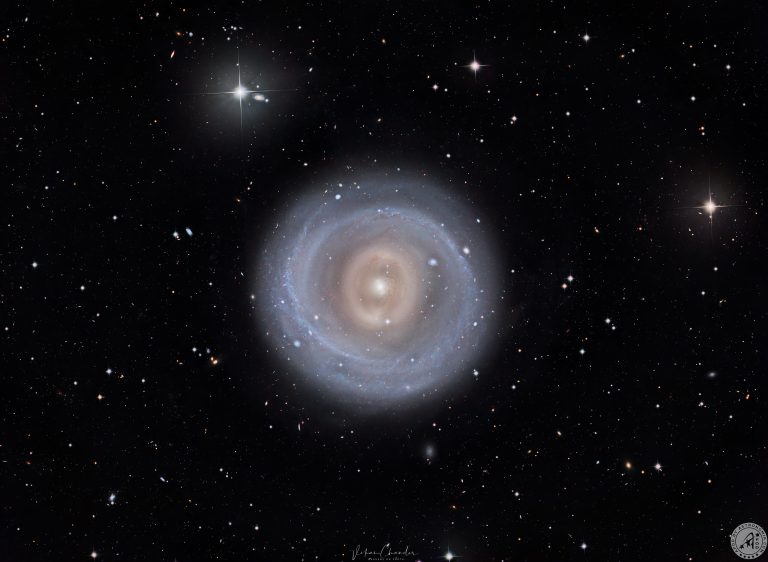Vikas Chander Astrophotography
NGC 1291
Eridanus
Telescope : Takahashi E160ed
Camera : ASI ZWO 6200mm Pro
Mount : Software Bisque Paramount MX+
Focal length : 528mm
Fov : 234 x 156 arcmins
Image Scale : 1.47 arcsec/pixel
Observatory : Deep Sky Chile
Filters: Astronomik
L 147x3m R 30x3m G 030x3m B 30x3m
Integration: 11h51m
RA center: 03h17m19s
DEC center: -41°06′45″

NGC 1291, also known as NGC 1269, is a ring galaxy with an unusual inner bar and outer ring structure located about 33 million light-years away in the constellation Eridanus. It was discovered by James Dunlop in 1826 and subsequently entered into the New General Catalogue as NGC 1291 by Johan Ludvig Emil Dreyer. John Herschel then observed the same object in 1836 and entered it into the catalog as NGC 1269 without realizing that it was a duplicate. NGC 1291 faces towards the Solar System nearly face-on. It has a prominent bulge, and is forming stars in its disk, albeit slowly, being a lenticular galaxy. Like other early-type galaxies, NGC 1291 has a population of old globular clusters. About 65% of them belong to the "blue" population that is more metal-poor, while the rest are "red" and more metal-rich.
© Vikas Chander All rights reserved Copyrights

